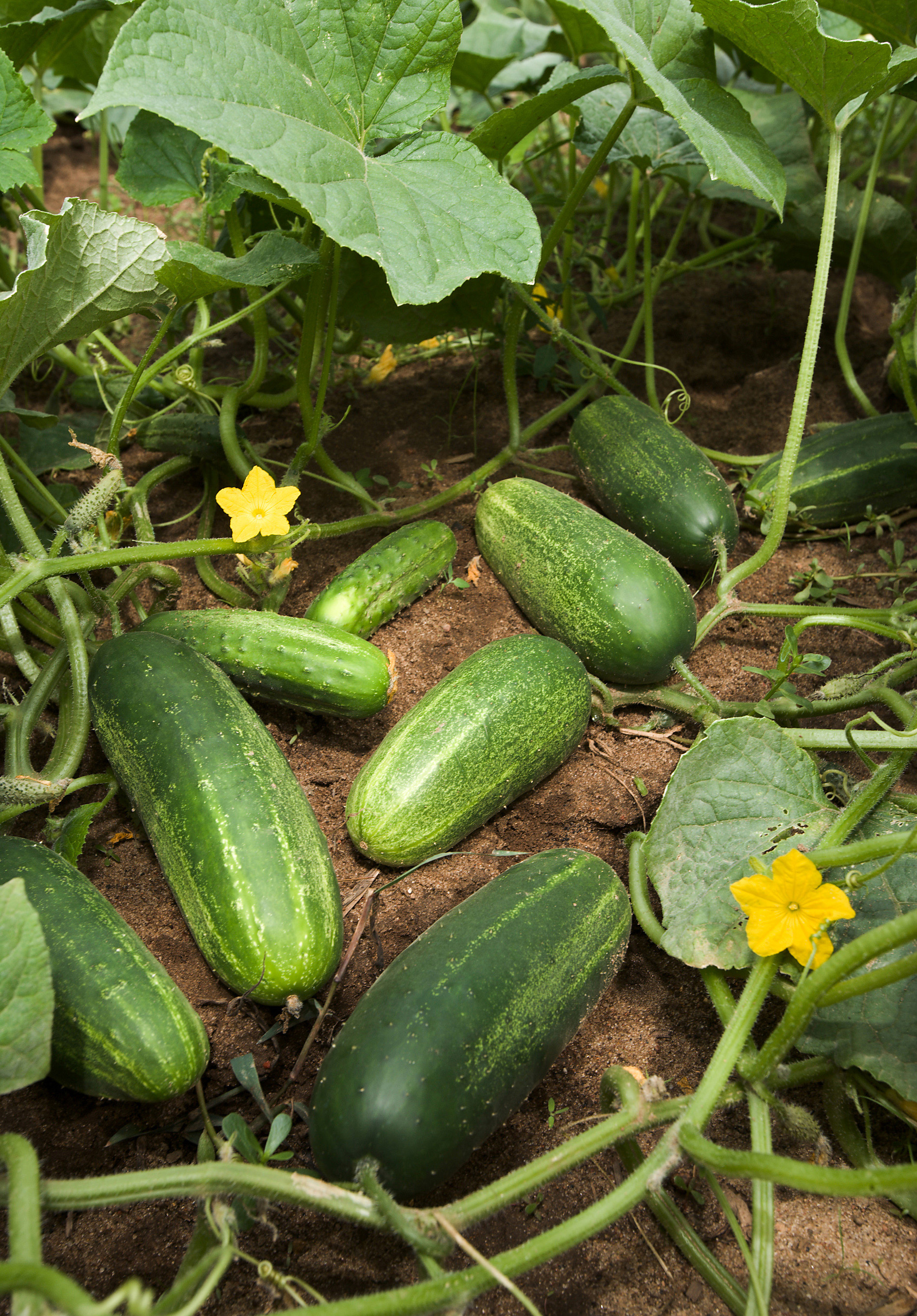Description
Cucumbers grow as vines and are an easy crop to grow. Cucumbers are part of the cucurbit family related to other vegetables such as pumpkins and squash. There are several varieties of cucumber. Traditional cucumbers such as Lebanese cucumber produce long, dark-green fruit that is picked from when it is 10cm long. Burpless is a long green cucumber with a thin skin sold as low acid. Apple cucumbers are round with creamy-white skin. Pickling cucumbers are called gherkins and are picked small (5-10cm in length). Cucumbers are 90 percent water, which is why they feel cool and are low in fat and calories.
Planting requirements
Planting season: Cucumbers can be grown throughout the year. Most favourable seasons are from April to September and Octorber to January
Planting conditions:
| Propagation | Can be grown from seed or seedling |
|---|---|
| Planting method | In the ground, seeds can be sown directly into warm, well-prepared soil. Sow seeds 12mm deep and 60-90cm apart into damp soil. Press the seed firmly into the soil and lightly cover it. They grow in loose soil that is well-drained and full of organic matter. As cucumbers are heavy feeders, add plenty of compost to the soil before planting |
| Soil | Need fertile, well-drained, slightly acid to neutral pH soil around 5.5 to 7.5 |
| Water | Keep the soil moist but not wet |
| Light | Need at least 8 hours of direct sunlight a day |
Growing conditions:
| Temperatures | Needs a temperature between 16°C and 35°C |
|---|---|
| Soil | A soil rich in nutrients helps build strong plants. Water well and let the soil rest for a week or two if possible. Spreading organic mulch around the base of the plant helps to keep the roots cool and the soil moist |
| Water | Drip irrigation is the best method. Water them in the morning |
| Pruning | Pinch back growing tips once fruits begin to form to encourage bushier growth |
| Weed control | Keep weeds at bay by mulching around plants and removing weeds regularly |
Harvesting
Harvest in 8-10 weeks. Cut fruit off with scissors or a sharp knife.
Curing
Cucumber does not require a curing stage
Storage
Store harvested cucumbers in the refrigerator crisper drawer for up to 3-5 days.
Protecting your plants
Pest control
Pest type:
- Fruit Flies (Tephritidae)
- Aphids (Aphididae)
- Whiteflies (Aleyrodidae)
Symptoms:
- Fruit Flies: Cause fruit rot by laying eggs inside the fruit.
- Aphids: Cause leaf curling and stunted growth due to sap-sucking activity.
- Whiteflies: Lead to yellowing of leaves as they feed on plant sap.
Control method:
- Fruit Flies: Use traps, cover fruits with protective netting, and dispose of affected fruits.
- Aphids: Use insecticidal soaps, neem oil, and introduce natural predators like ladybugs.
- Whiteflies: Use yellow sticky traps, neem oil, and encourage natural predators like lacewings.
Disease Control
Disease type:
- Powdery Mildew (Podosphaera xanthii)
- Downy Mildew (Pseudoperonospora cubensis)
- Collar Rot/Root Rot (Sclerotium spp., Fusarium spp.)
- Gummy Stem Blight (Didymella bryoniae)
- Bacterial Wilt (Ralstonia solanacearum)
- Leaf Curl Virus (LCV)
- Papaya Ring Spot Virus (PRSV)
- Cucumber Mosaic Virus (CMV)
- Zucchini Yellow Mosaic Virus (ZYMV)
- Phytoplasma Disease
Symptoms:
- Powdery Mildew: White, fluffy growth on the surface of leaves, leading to browning and shriveling.
- Downy Mildew: Angular yellow spots on leaves, eventually causing necrosis and plant cell death.
- Collar/Root Rot: Wilting, yellowing of leaves, plant collapse, with discolored vascular bundles.
- Gummy Stem Blight: Dark, sunken lesions on stems and fruit, with gummy exudates and fruiting bodies visible.
- Bacterial Wilt: Sudden leaf drooping, plant wilting, and brown vascular tissue in affected parts.
- Leaf Curl Virus: Upward curling and distortion of leaves, stunted plants, and deformed fruits.
- Papaya Ring Spot Virus: Mottling, leaf distortion, oily patches on fruits.
- Cucumber Mosaic Virus: Mottled leaves, fruit deformities, and decayed yellow spots on fruits.
- Zucchini Yellow Mosaic Virus: Stunting, yellowing, leaf blistering, and fruit discoloration.
- Phytoplasma Disease: Stunted growth, yellow-green leaves, "witch's broom" appearance, and greening of flowers.
Management:
- Powdery Mildew: Use fungicides early, remove infected plant debris, and provide good air circulation.
- Downy Mildew: Apply recommended fungicides, remove infected debris, and use resistant varieties.
- Collar/Root Rot: Improve drainage, remove and destroy infected plants, and apply appropriate fungicides.
- Gummy Stem Blight: Deep plowing of crop debris post-harvest, and use fungicides.
- Bacterial Wilt: Remove infected plants, crop rotation with non-susceptible plants, and practice field hygiene.
- Leaf Curl Virus: Control whitefly populations using insecticides and remove infected plants.
- Papaya Ring Spot Virus: Control aphids and remove infected plants.
- Cucumber Mosaic Virus: Remove infected plants and apply preventive sprays.
- Zucchini Yellow Mosaic Virus: Remove infected plants, control vectors, and practice crop rotation.
- Phytoplasma Disease: Control leafhoppers with insecticides and remove infected plants.
